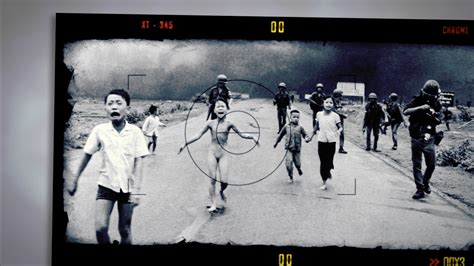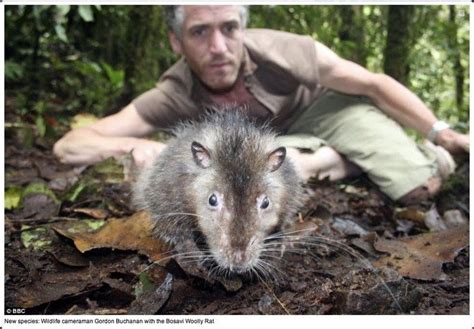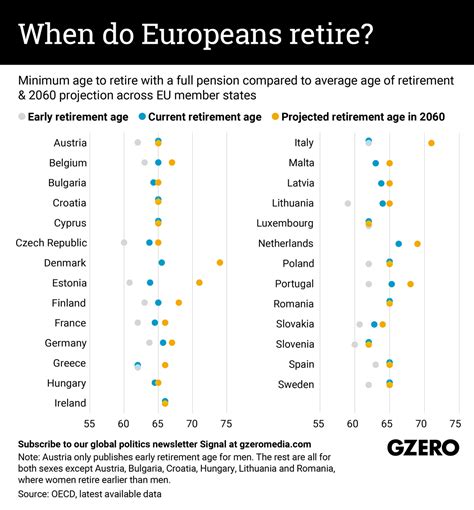
A cloud of uncertainty has enveloped one of the Vietnam War’s most iconic photographs, the “Napalm Girl,” as questions arise over the true identity of the photographer and the circumstances surrounding its capture. The World Press Photo Foundation is temporarily withholding credit for the Pulitzer Prize-winning image pending an independent investigation into claims that Nick Ut, the Associated Press photographer initially credited, may not have been the only, or even the primary, photographer present when the photo was taken.
The controversy stems from allegations suggesting that Vietnamese photographer Huynh Cong “Nick” Ut, although credited for decades, might have been working alongside or under the direction of other photographers on June 8, 1972, when the image was captured near Trang Bang. The iconic photo shows then-nine-year-old Kim Phuc running naked down a road, screaming in pain from severe napalm burns. The image became a symbol of the horrors of the Vietnam War, galvanizing anti-war sentiment globally.
According to the Associated Press, the World Press Photo Foundation (WPPF) announced that it would temporarily withhold the credit given to Ut while they conduct an independent investigation into the circumstances surrounding the creation of the photograph. This review was prompted by inquiries questioning the precise details of how the image was taken and the roles of other AP photographers potentially involved at the scene. The WPPF aims to ensure the accuracy and integrity of the historical record associated with the renowned photograph.
The implications of this investigation are far-reaching, potentially affecting not only the legacy of Ut but also the AP’s historical narrative surrounding the Vietnam War coverage. If the investigation reveals that Ut’s role was significantly different from the widely accepted version, it could reshape the understanding of how one of history’s most impactful photographs came to be.
The Associated Press has stated that it is cooperating fully with the World Press Photo Foundation’s investigation. They maintain that Ut was the photographer who captured the image and that their historical records support this assertion. However, they also acknowledge the importance of verifying the claims raised to ensure the credibility of their reporting.
The “Napalm Girl” photograph earned Ut the Pulitzer Prize for Spot News Photography in 1973 and the World Press Photo of the Year award in 1972. It has been described as one of the most influential photographs of the 20th century, and its impact continues to resonate today. Kim Phuc, the subject of the photo, has become a symbol of resilience and a tireless advocate for peace, working through her foundation to support child victims of war.
The World Press Photo Foundation’s investigation will examine various sources, including archival materials, witness testimonies, and photographic evidence, to determine the precise roles of all individuals present at the scene. The findings are expected to be released in the coming months, after which the WPPF will decide whether to reinstate Ut’s credit, modify it, or assign it to another individual or group.
This ongoing controversy underscores the importance of journalistic integrity and the need for continuous scrutiny of historical accounts, even those seemingly well-established. As the investigation unfolds, the photojournalism world and the public await the results, which could significantly alter the narrative surrounding one of the most unforgettable images ever captured.
Background of the Photo and its Impact
On June 8, 1972, during the Vietnam War, South Vietnamese forces mistakenly dropped napalm on Trang Bang village, believing it to be a Viet Cong stronghold. The resulting carnage was captured by several photographers and journalists, but it was Ut’s image of Kim Phuc fleeing the scene that became the defining image of the event and the war itself. The photograph showed Kim Phuc, naked and severely burned, running towards the camera, her face contorted in pain. The image quickly spread around the world, appearing on front pages of newspapers and magazines and becoming a powerful symbol of the war’s brutality.
The impact of the photograph was immediate and profound. It galvanized anti-war sentiment, contributing to growing public pressure on the U.S. government to withdraw from Vietnam. The image also raised ethical questions about the role of photojournalists in documenting human suffering. Some argued that Ut should have stopped taking pictures and helped Kim Phuc, while others maintained that his duty was to record the truth, no matter how painful.
Ut himself has spoken extensively about the experience of taking the photograph. He has said that he was deeply affected by what he witnessed and that he felt compelled to help Kim Phuc after taking the picture. He took her to a hospital, where she received treatment for her burns. Ut and Kim Phuc have remained friends ever since, and he has been a constant source of support for her.
Kim Phuc’s story is one of survival and resilience. Despite the horrific injuries she sustained, she went on to lead a full and productive life. She received extensive medical treatment, including numerous skin grafts, and eventually recovered physically, though she continues to live with the scars of the napalm attack. She later immigrated to Canada, where she started a family and dedicated herself to promoting peace and helping other victims of war. In 1997, she was appointed a UNESCO Goodwill Ambassador for Peace.
The Role of Nick Ut and Associated Press
Nick Ut, born Huynh Cong Ut, began his career as a photographer for the Associated Press at the age of 16, following in the footsteps of his older brother, who was also an AP photographer and was killed in action in Vietnam. Ut covered numerous conflicts and events throughout his career, but it was his “Napalm Girl” photograph that brought him international recognition.
Ut’s role in capturing the image has been widely celebrated. He has received numerous awards for his work, including the Pulitzer Prize and the World Press Photo of the Year award. The AP has consistently credited Ut as the sole photographer responsible for the image, and his account of the events surrounding the photograph has been accepted as the definitive version for decades.
However, the current investigation by the World Press Photo Foundation raises questions about the accuracy of this account. The allegations suggest that Ut may have been working alongside other AP photographers at the time, and that their contributions may have been overlooked. The investigation will likely focus on determining the precise roles of each individual present at the scene and whether Ut’s claim as the sole photographer is justified.
The Associated Press has stated that it is cooperating fully with the investigation and that it is committed to ensuring the accuracy of its historical records. The AP’s reputation for journalistic integrity is at stake, and the outcome of the investigation could have significant implications for the organization.
The World Press Photo Foundation’s Investigation
The World Press Photo Foundation is an independent organization dedicated to promoting and supporting photojournalism worldwide. It organizes an annual photo contest that recognizes the best press photographs of the year. The “Napalm Girl” photograph won the World Press Photo of the Year award in 1972, solidifying its place as one of the most important images in the history of photojournalism.
The WPPF’s decision to investigate the circumstances surrounding the creation of the “Napalm Girl” photograph reflects its commitment to upholding the highest standards of journalistic integrity. The investigation is being conducted independently, and the WPPF has stated that it will consider all available evidence before reaching a conclusion.
The investigation will likely involve a thorough review of archival materials, including photographs, documents, and correspondence. The WPPF will also interview witnesses and experts to gather additional information. The goal is to determine the precise roles of all individuals present at the scene and to establish a definitive account of how the photograph was taken.
The WPPF’s findings will be made public, and its decision on whether to reinstate Ut’s credit, modify it, or assign it to another individual or group will be based on the evidence gathered during the investigation. The outcome of the investigation could have significant implications for the legacy of the “Napalm Girl” photograph and for the field of photojournalism as a whole.
Ethical Considerations in Photojournalism
The controversy surrounding the “Napalm Girl” photograph raises important ethical considerations for photojournalists. One of the central questions is whether a photojournalist’s duty is primarily to record events or to intervene and help those in need.
Some argue that Ut should have stopped taking pictures and helped Kim Phuc, whose suffering was clearly evident. They contend that a human life is more important than a photograph, no matter how powerful the image may be. Others argue that Ut’s duty was to record the truth, no matter how painful it may be. They maintain that the photograph served an important purpose by exposing the horrors of the Vietnam War and galvanizing anti-war sentiment.
This debate highlights the inherent tension between the ethical obligations of a journalist and the demands of their profession. Photojournalists often find themselves in difficult situations where they must make split-second decisions that have profound consequences. There are no easy answers, and each situation must be evaluated on its own merits.
Another ethical consideration is the potential for exploitation of vulnerable subjects. The “Napalm Girl” photograph shows Kim Phuc at her most vulnerable, naked and severely burned. Some have argued that the photograph exploits her suffering and that it should not be displayed or published. Others argue that the photograph serves an important purpose by raising awareness of the human cost of war and that it is necessary to show the harsh realities of conflict in order to prevent future atrocities.
These ethical considerations are complex and multifaceted, and they continue to be debated by photojournalists, ethicists, and the public. The controversy surrounding the “Napalm Girl” photograph serves as a reminder of the ethical challenges that photojournalists face and the importance of upholding the highest standards of journalistic integrity.
The Future of the Photograph’s Legacy
Regardless of the outcome of the World Press Photo Foundation’s investigation, the “Napalm Girl” photograph will continue to be one of the most iconic and influential images of the 20th century. The photograph’s power lies in its ability to convey the human cost of war in a way that words cannot. It is a stark reminder of the suffering that innocent civilians endure during armed conflicts.
Kim Phuc’s story is one of survival and resilience, and she has become a symbol of hope for victims of war around the world. Her work as a UNESCO Goodwill Ambassador for Peace has helped to raise awareness of the needs of child victims of war and to promote peace and reconciliation.
The controversy surrounding the photograph’s authorship may raise questions about the circumstances of its creation, but it does not diminish the photograph’s power or its importance. The photograph will continue to be displayed in museums and galleries around the world, and it will continue to be used to educate future generations about the horrors of war.
The ongoing investigation by the World Press Photo Foundation underscores the importance of journalistic integrity and the need for continuous scrutiny of historical accounts. It is a reminder that even the most well-established narratives can be challenged and that it is essential to verify the facts before accepting them as truth.
As the investigation unfolds, the photojournalism world and the public await the results, which could significantly alter the narrative surrounding one of the most unforgettable images ever captured. Ultimately, the legacy of the “Napalm Girl” photograph will depend on its ability to continue to inspire and to move people, regardless of who took the picture. The image is a testament to the enduring power of photojournalism to capture the human condition and to shape our understanding of the world.
The photograph’s significance transcends the immediate circumstances of its creation. It serves as a universal symbol of the suffering caused by war and a powerful reminder of the need for peace. As long as conflicts continue to plague the world, the “Napalm Girl” photograph will remain relevant and important. Its message of hope and resilience will continue to inspire people to work towards a better future for all.
The Larger Context of Vietnam War Photography
The “Napalm Girl” photograph is just one example of the powerful and impactful photography that emerged from the Vietnam War. The war was one of the most heavily photographed conflicts in history, and the images that came out of Vietnam had a profound effect on public opinion in the United States and around the world.
Photographers like Nick Ut, Eddie Adams, and Larry Burrows risked their lives to document the war, and their images helped to bring the realities of the conflict into people’s living rooms. The photographs showed the brutality of the war, the suffering of the Vietnamese people, and the disillusionment of American soldiers.
These images played a significant role in shaping public opinion and contributing to the growing anti-war movement. They helped to expose the lies and deceptions of the U.S. government and to galvanize opposition to the war.
The Vietnam War was a watershed moment in the history of photojournalism. It demonstrated the power of images to influence public opinion and to hold those in power accountable. The photographs from Vietnam continue to be studied and analyzed today, and they serve as a reminder of the importance of independent and courageous journalism.
Kim Phuc’s Life After the Photograph
Kim Phuc’s life after the photograph is a testament to her resilience and determination. Despite the horrific injuries she sustained, she went on to lead a full and productive life. She received extensive medical treatment, including numerous skin grafts, and eventually recovered physically, though she continues to live with the scars of the napalm attack.
She later immigrated to Canada, where she started a family and dedicated herself to promoting peace and helping other victims of war. In 1997, she was appointed a UNESCO Goodwill Ambassador for Peace.
Kim Phuc has spoken extensively about her experiences and about the impact of the “Napalm Girl” photograph on her life. She has said that the photograph is a reminder of the horrors of war and that it motivates her to work for peace. She has also said that she has forgiven the pilot who dropped the napalm on her village and that she believes that forgiveness is essential for healing and reconciliation.
Kim Phuc’s story is an inspiration to people around the world. She has shown that it is possible to overcome even the most horrific experiences and to lead a life of purpose and meaning. Her work as a peace advocate has made a significant contribution to the world, and her legacy will continue to inspire future generations.
The ongoing controversy surrounding the “Napalm Girl” photograph does not diminish Kim Phuc’s story or her accomplishments. Her resilience and her dedication to peace are unwavering, and she continues to be a powerful voice for victims of war around the world.
The photograph is a reminder of the horrors of war, but it is also a testament to the human spirit’s capacity for resilience and hope. Kim Phuc’s life is a living example of that resilience, and her story will continue to inspire people for years to come.
FAQ: Frequently Asked Questions about the “Napalm Girl” Credit Controversy
-
What is the “Napalm Girl” photograph and why is it significant? The “Napalm Girl” photograph, taken on June 8, 1972, by Associated Press (AP) photographer Nick Ut, depicts then-nine-year-old Kim Phuc running naked and screaming after being severely burned by napalm dropped during a South Vietnamese air strike. The image became a powerful symbol of the Vietnam War’s brutality and its impact on civilians. It won the Pulitzer Prize and the World Press Photo of the Year award and is considered one of the most influential photographs of the 20th century.
-
Why is the World Press Photo Foundation (WPPF) investigating the credit for the “Napalm Girl” photograph? The WPPF has initiated an independent investigation due to questions raised about the accuracy of crediting Nick Ut as the sole photographer. Allegations suggest that other AP photographers might have been present and involved in capturing the image, potentially influencing or contributing to the final photograph. The investigation aims to ensure the historical record accurately reflects the circumstances of the photo’s creation.
-
What are the potential outcomes of the WPPF investigation? The WPPF investigation could lead to several outcomes:
- Reinstating Nick Ut’s credit as the sole photographer.
- Modifying the credit to acknowledge the contributions of other photographers present at the scene.
- Assigning credit to another individual or group if the investigation determines that Ut’s role was not as significant as previously believed. The decision will be based on the evidence gathered from archival materials, witness testimonies, and photographic analysis.
-
How is the Associated Press (AP) responding to the investigation? The Associated Press has stated that it is fully cooperating with the World Press Photo Foundation’s investigation. While maintaining that their historical records support Nick Ut as the photographer who captured the image, they acknowledge the importance of verifying the claims raised to ensure the credibility of their reporting.
-
How might this controversy affect Kim Phuc, the subject of the photograph? While the controversy may bring renewed attention to the photograph and the events surrounding it, Kim Phuc’s story of survival and advocacy for peace remains unchanged. She has used her experiences to become a UNESCO Goodwill Ambassador for Peace, working to support child victims of war and promote reconciliation. The photograph’s impact and her personal journey continue to inspire, regardless of the outcome of the investigation into its authorship.









